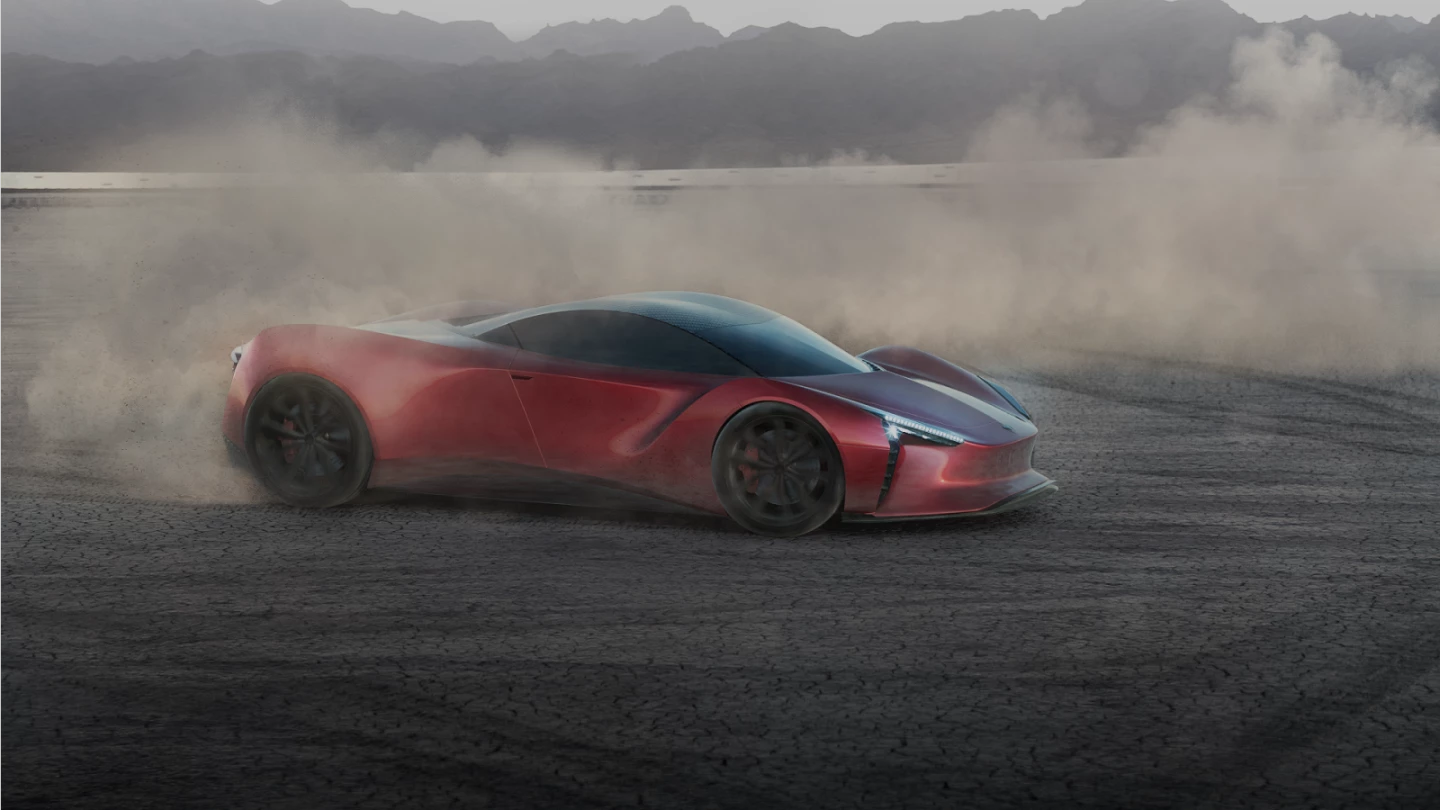India's Mean Metal Motors has announced what it claims will be the subcontinent's first home-grown hypercar: the all-electric Azani. With 1,000 horsepower, 1,000 Nm (738 lb-ft), and a claimed 325-mile (523-km) range from its 120-kWh battery, it promises plenty of high-tech hooligan fun with Italian looks and a very Indian price tag.
The Azani claims a 220-mph (354-km/h) top speed, which would be enough to keep most of us awake, and while its 0-60-mph (0-96-km/h) sprint time isn't going to embarrass the bloke next door with the Rimac Nevera, it'll still get you clear of traffic if you're lucky enough to stop at the front of the queue when the lights go red.
The chassis is an aluminum spaceframe on a skateboard chassis, and from the renders it looks like most of the bodywork will be aluminum too. Suspension is adaptive and magneto-rheologically controlled. Brakes are ventilated carbon discs.
Driver assist gear will allegedly include adaptive cruise, auto emergency braking, blind spot and lane change assist, a "collision avoidance system" – avoiding collisions certainly seems to be a good idea – and torque vectoring to help you get around fast corners without your thousand ponies breaking loose and flinging you into the wrong part of the scenery.

The Mean Metal Motors team also promises augmented reality HUDs, "advanced morphing seats" and telematics, with an "advanced AI module" built in for an unspecified purpose, and built-in "M-Log" integration. We don't know what M-Log does; the official video presentation takes 18 seconds and says simply "Connect. Future. Now." So that sounds pretty cool. Lest it get out of date, the Azani will also roll with "vehicle software upgradation capabilities."
It'll be built in AI-enhanced factories, by robots, in a modular fashion, using "100x fewer components," making it "4x cheaper to build" than... Whatever it is Mean Metal is comparing it to. Companies interested in working with Mean Metal will be delighted to learn that this approach will result in "25 percent overall reductions in supplier margins." Congratulations to current listed partners Yasa motors, Xtrac Differential, Nvidia, Sick Sensor Intelligence and National Instruments.
The company wants to make everything electronic, introducing brake by wire and steer by wire such that future vehicles built on the platform could easily become autonomous. Best of all, according to India's Car and Bike, the Azani will cost just 89 lakh rupees, or US$120,000. Bargain! They're taking reservations right now, and "prototyping is underway."
So who are Mean Metal Motors? The same team, it turns out, behind the M-Zero electric sports car. Announced in 2016 and set to premiere in 2018, the M-Zero vanished off the face of the Earth, as far as we can tell, to be replaced by the Azani. But it did earn MMM 750 pre-orders, 2.5 million website hits, more than a million social media interactions and more than 200 articles in the press.
While thousand-horsepower electric hypercars are most definitely possible to build – indeed, easier in many ways than thousand-horsepower combustion cars – India doesn't have a reputation as a red-hot hypercar market, nor the sort of place where the roads are particularly kind to razor-sharp performance beasts.
One of India's greatest world-changing inventions is the mathematical concept of zero, which is believed to have first been written down in an ancient scroll called the Bhakshali manuscript, carbon dated to the 3rd or 4th century of the Common Era. It's hard to escape the suspicion that zero is exactly what Mean Metal Motors will end up manufacturing here, beyond a few hundred more press articles ...
Still, the company is calling for investors to get on board. Who knows if it'll ever see the light of day, but whoever does get an Indian hypercar over the finish line will certainly be the toast of the country.
Source: Mean Metal Motors









